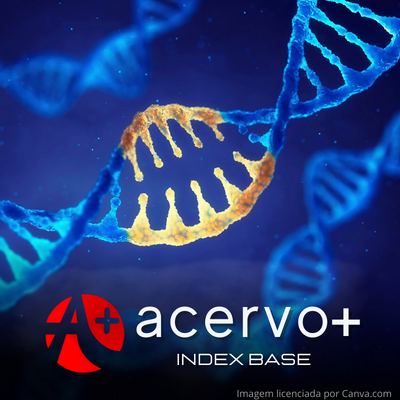Mutação do PIK3DC na Síndrome do Fosfoinositídeo 3 Quinase Delta Ativado: estudo de caso
##plugins.themes.bootstrap3.article.main##
Resumo
Objetivo: Descrever o processo de evolução clínica, diagnóstico e tratamento proposto ao paciente. Detalhamento do caso: Paciente masculino, 4 anos, apresenta histórico de início de quadro de broncoespasmos ao 1 ano de idade, cursou com quadros diarreicos e aos 2 anos de idade apresentou quadros de adenopatia. Amigdalite também foi uma das patologias apresentada, dentre outros sintomas. O diagnóstico foi estabelecido após análise de teste genético que indicou imunodeficiência humana de herança autossômica dominante e variante patogênica heterozigótica no gene PIK3CD. Essas enzimas atuam no controle da inibição do apoptose celular, regulação do ciclo celular e controle do crescimento de célula, sua alteração culmina em alteração da imunidade. O diagnóstico foi estabelecido de maneira coerente aos achados da literatura, por fim o tratamento do paciente foi conforme o preconizado. Considerações finais: Todo o processo de cuidado ofertado ao paciente apresentado seguiu o padrão preconizado, tal fato suscita preparo da equipe responsável, assim como, possibilidade de qualidade de vida, visto que, o estabelecimento adequado do diagnóstico e tratamento pode atenuar o sofrimento.
##plugins.themes.bootstrap3.article.details##
Copyright © | Todos os direitos reservados.
A revista detém os direitos autorais exclusivos de publicação deste artigo nos termos da lei 9610/98.
Reprodução parcial
É livre o uso de partes do texto, figuras e questionário do artigo, sendo obrigatória a citação dos autores e revista.
Reprodução total
É expressamente proibida, devendo ser autorizada pela revista.
Referências
2. CHELLAPANDIAN D et al. Precision Therapy for the Treatment of Primary Immunodysregulatory Diseases. Immunology And Allergy Clinics Of North America, 2020; 40(3): 511-526.
3. COULTER TI, et al. Clinical spectrum and features of activated phosphoinositide 3-kinase d syndrome: a large patient cohort study. J Allergy Clin Immunol., 2017; 139(2): 597-606.
4. COHEN JI. Herpesviruses in the Activated Phosphatidylinositol-3-Kinase-δ Syndrome. Frontiers In Immunology, 2018; 9: 1-8.
5. CONDLIFFE AM e CHANDRA A. Respiratory Manifestations of the Activated Phosphoinositide 3-Kinase Delta Syndrome. Frontiers In Immunology, 2018; 9: 1-8.
6. CRAIG M, et al. Activated phosphoinositide 3-kinase δ syndrome associated with nephromegaly, growth hormone deficiency, bronchiectasis: a case report. Allergy, Asthma & Clinical Immunology, 2022; 18(1): 1-8.
7. DEAU MC, et al. A human immunodeficiency caused by mutations in the PIK3R1 gene. The Journal Of Clinical Investigation, 2014; 129(9): 3923-3928.
8. ELKAIM E, et al. Clinical and immunologic phenotype associated with activated phospho-inositide 3-kinase δ syndrome 2: a cohort study. J Allergy Clin Immunol., 2016; 138(1): 210.
9. EDWARDS ESJ, et al. Activating PIK3CD mutations impair human cytotoxic lymphocyte differentiation and function and EBV immunity. Journal Of Allergy And Clinical Immunology, 2019; 143(1): 276-291.
10. HORVATICH L, et al. 3-kinase-d phosphoinositide syndrome activated - PIK3CD mutation: case report. Residência Pediátrica, 2019; 10(2): 1-3.
11. JAMEE M, et al. Clinical, Immunological, and Genetic Features in Patients with Activated PI3Kδ Syndrome (APDS): a Systematic Review. Clinic Rev Allerg Immunol., 2020; 59: 323–333.
12. LUCAS CL, et al. PI3Kδ and primary immunodeficiencies. Nat Rev Immunol., 2016; 16(11): 702-14.
13. LUCAS CL, et al. Dominant-activating germline mutations in the gene encoding the PI(3)K catalytic subunit p110δ result in T cell senescence and human immunodeficiency Nat Immunol., 2014; 15(1): 88-97.
14. LUCAS CL, et al. Heterozygous splice mutation in PIK3R1 causes human immunodeficiency with lymphoproliferation due to dominant activation of PI3K. Journal of Experimental Medicine, 2014; 211(3): 13: 2537-2547.
15. MACCARI ME, et al. Disease evolution and response to rapamycin in activated phosphoinositide 3-Kinase δ syndrome: The European Society for immunodeficiencies-Activated Phosphoinositide 3-Kinase δ syndrome registry. Front Immunol., 2018; 9(543): 1-8.
16. MICHALOVICH D e NEJENTSEV S. Activated PI3 Kinase Delta Syndrome: from genetics to therapy. Frontiers In Immunology, 2018; 9: 1-6.
17. NADEMI Z, et al. Hematopoietic stem cell transplant in patients with activated PI3K delta syndrome. Journal of Allergy and Clinical Immunology, 2017; 139(3): 1046-1049.
18. ORCY RB, et al. Signalization of Akt/PKB in the placenta, skeletal muscle
and adipose tissue of preeclampsia patients. Gynecol Obstet Invest, 2008; 66: 231-236.
19. RIVALTA B, et al. Case Report: ebv chronic infection and lymphoproliferation in four apds patients. Frontiers in Pediatrics, 2021; 9: 1-12.
20. ROXO JÚNIOR P. Imunodeficiências primárias: aspectos relevantes para o pneumologista. Jornal Brasileiro de Pneumologia, 2009; 35(10): 1008-1017.
21. SINGH A, et al. An updated review on activated PI3 kinase delta syndrome (APDS). Genes & Diseases, 2020; 7(1): 67-74.
22. WANG Y, et al. Report of a Chinese Cohort with Activated Phosphoinositide 3-Kinase δ Syndrome. Journal of Clinical Immunology, 2018; 38(8): 854-863.

